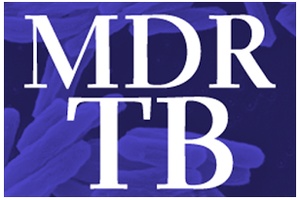Breakthrough study demonstrates far shorter, more effective treatment for MDR-TB, with majority cured
Final results demonstrated nine-month treatment had 82% success rate, compared with previous standard that required more than 20 months of treatment and achieved cure rates below 55%.
Wednesday, 26 October, 2016 (Liverpool, UK) – Final
results from an observational study conducted with 1,006
rifampicin-resistant tuberculosis (RR-TB) patients in nine
francophone countries in Africa show high treatment success
rates of 82 percent with limited adverse events on a nine-month
treatment regimen. The study was carried out among MDR-TB
patients in Benin, Burkina Faso, Burundi, Cameroon, Central
African Republic, Côte d’Ivoire, Democratic Republic
of the Congo, Niger and Rwanda. The results were presented at
the 47th Union World Conference on Lung Health convening in
Liverpool, UK, 26-29 October 2016.
“The
francophone study is a breakthrough in the fight against
drug-resistant TB,” said Dr Paula I Fujiwara, Scientific
Director of the International Union Against Tuberculosis and
Lung Disease (The Union). “These results have now been
replicated in many different settings and with a large number of
patients, showing conclusively that this is the most effective
treatment for drug-resistant TB discovered to date.”
The
previous standard regimen for treating drug-resistant TB lasted
20 months or more and achieved cure rates below 55 percent.
Based on the francophone´s strong preliminary data
presented in December 2015, the World Health Organization (WHO)
in May 2016 recommended that the nine-month treatment regimen be
used in place of the previous regimens.
“With
strong evidence now showing that this regimen is the most
effective available for treating multidrug-resistant forms of
TB, the next step is for countries to begin widely implementing
this new approach,” said Dr Arnaud Trébucq, a
Senior Consultant with The Union.
Among the
1006 patients who participated in the study, treatment was
successful for 821 (82 percent), of whom 734 were cured, defined
as patients who completed the full course of treatment without
evidence of failure, and who produced samples that tested
negative for the presence of TB bacteria three times before
treatment completion, using a culture test. A culture test, in
which colonies of TB bacteria are cultured within a growth
medium, is the most rigorous test available for identifying the
presence of TB. An additional 87 patients successfully completed
the full course of treatment without demonstrating any signs of
treatment failure but had less than three negative culture
results. An additional 54 patients (5 percent) did not respond
to the treatment, 82 patients (8 percent) died, and 49 (5
percent) were lost to follow-up. The death rate was higher among
patients with HIV-infection, but among patients who survived,
the regimen demonstrated similar success rates in HIV-infected
and non HIV-infected patients.
The study was
carried out by researchers from The Union, together with the
Institute of Tropical Medicine of Anvers (Belgium), the San
Raffaele Scientific Institute of Milan (Italy) and the teams of
each of the nine participating countries which included
clinicians, National Reference Laboratories and National
Tuberculosis control Programmes.
On 13 October,
WHO published new data on the global TB epidemic, referring to
drug-resistant TB as a “crisis.” In 2015, 580,000
people became sick with TB resistant to at least rifampicin, of
whom 480,000 were diagnosed as having developed resistance to
both rifampicin and isoniazid. In September 2016, the United
Nations General Assembly issued a declaration committing to take
worldwide action against drug-resistant TB. The declaration
recognised that within the broader context of antimicrobial
resistance, resistance to antibiotics “is the greatest and
most urgent global risk, requiring increased attention and
coherence at the international, national and regional
levels.”
Source:
The Union


